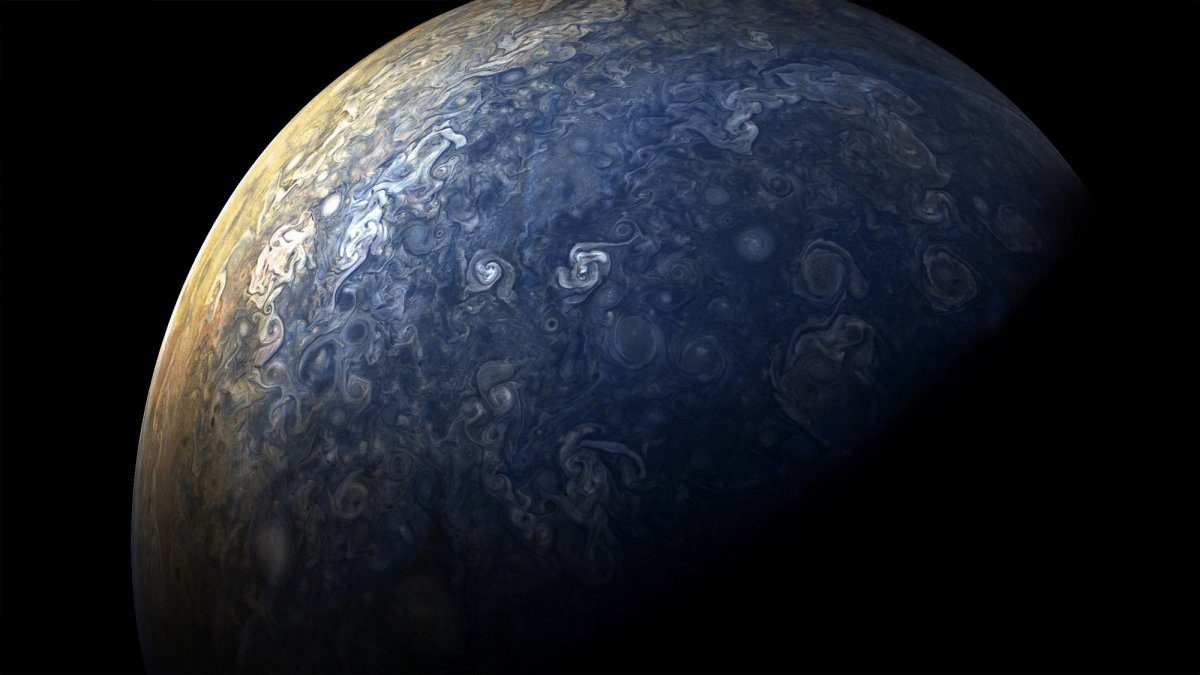
Now that the conjunction is over, however, new raw image data from Juno's ninth perijove - as the spacecraft's high-speed flybys are called - has poured in. Researchers posted it all online on Tuesday, and a community of amateurs and professionals has been busily processing the data to yield colorful and stunning new pictures of Jupiter.
"Brand new Jupiter pics from @NASAJuno Perijove 09! What a blimmin' gorgeous/diabolical planet," Seán Doran, a UK-based graphic artist who regularly processes NASA images, tweeted on Tuesday.
Below are some fresh, close-up images of Jupiter, along with other unbelievable views captured from earlier perijoves.
The spacecraft then swept within a few thousand miles of the gas giant, capturing stunning high-resolution views of its cloud tops. At its closest approach to Jupiter during each flyby, the robot briefly becomes the fastest human-made object in the solar system, reaching speeds of around 130,000 miles per hour.
Then Juno flew back out into deep space, passing over Jupiter's South Pole on its exit. Churning storms at the poles constantly change their appearance. Researchers upload the raw data sent by the probe to the mission's website. There, enthusiasts take the drab, mostly gray image data and process it all into true-to-life color photos. Many snapshots of Jupiter take on an artistic quality. Others dazzle with their detail of the planet's thick cloud bands and powerful storms. Jupiter is made up predominantly of hydrogen. The simple, basic gas, a prime ingredient on the sun, accounts for 90 percent of the atmosphere. Nearly 10 percent is composed of helium. Some of the tempests are large enough to swallow planet Earth - or at least a good chunk of it. The planet's atmosphere is a turbulent mess of hydrogen and helium gases. The atmosphere of Jupiter is the largest planetary atmosphere in the Solar System. It is mostly made of molecular hydrogen and helium in roughly solar proportions; other chemical compounds are present only in small amounts and include methane, ammonia, hydrogen sulfide and water. There are also traces of molecules like ammonia, methane, sulfur, and water, which give the clouds different colors and properties. The mixture sometimes creates features that look like faces (as seen on the left in this image). Other times, shining-white clouds fill up most of a band. With an average temperature of minus 234 degrees Fahrenheit (minus 145 degrees Celsius), Jupiter is frigid even in its warmest weather. Unlike Earth, whose temperature varies as one moves closer to or farther from the equator, Jupiter's temperature depends more on height above the surface. Many cloud bands have features called chevrons. These atmospheric disturbances blow at several hundreds of miles per hour and sometimes zig-zag through a band, or punch through into others. In this older view of Jupiter, from Juno's eighth perijove, two cloud bands battle for dominance - one of which contains a swirling storm many times larger than a hurricane on Earth. The spacecraft will continue to document Jupiter for as long as NASA can keep it going. But not forever.
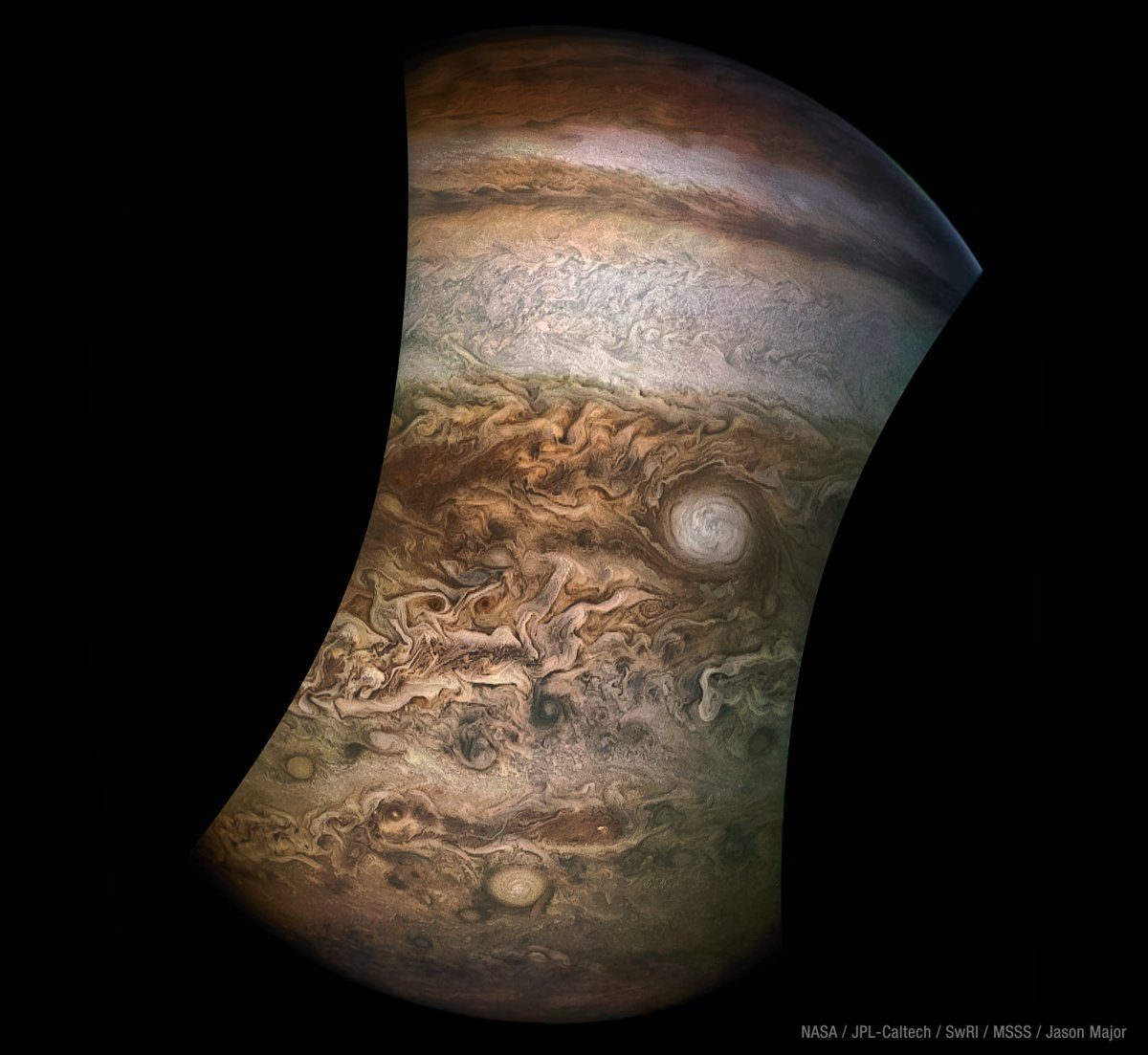
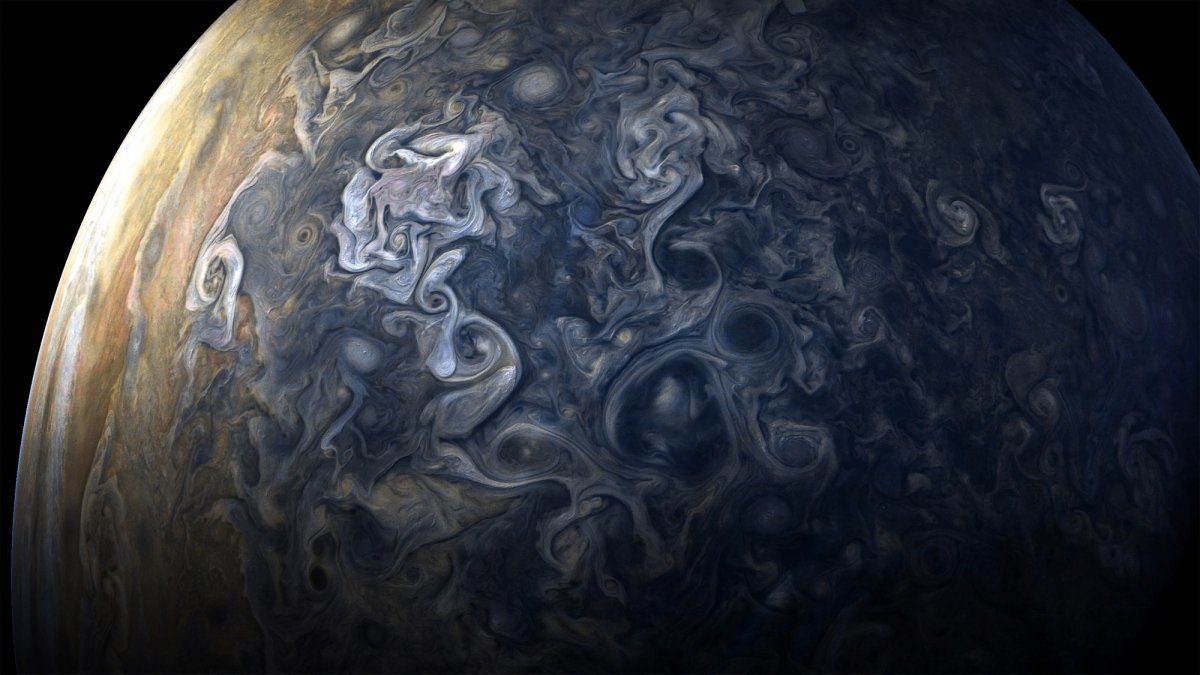

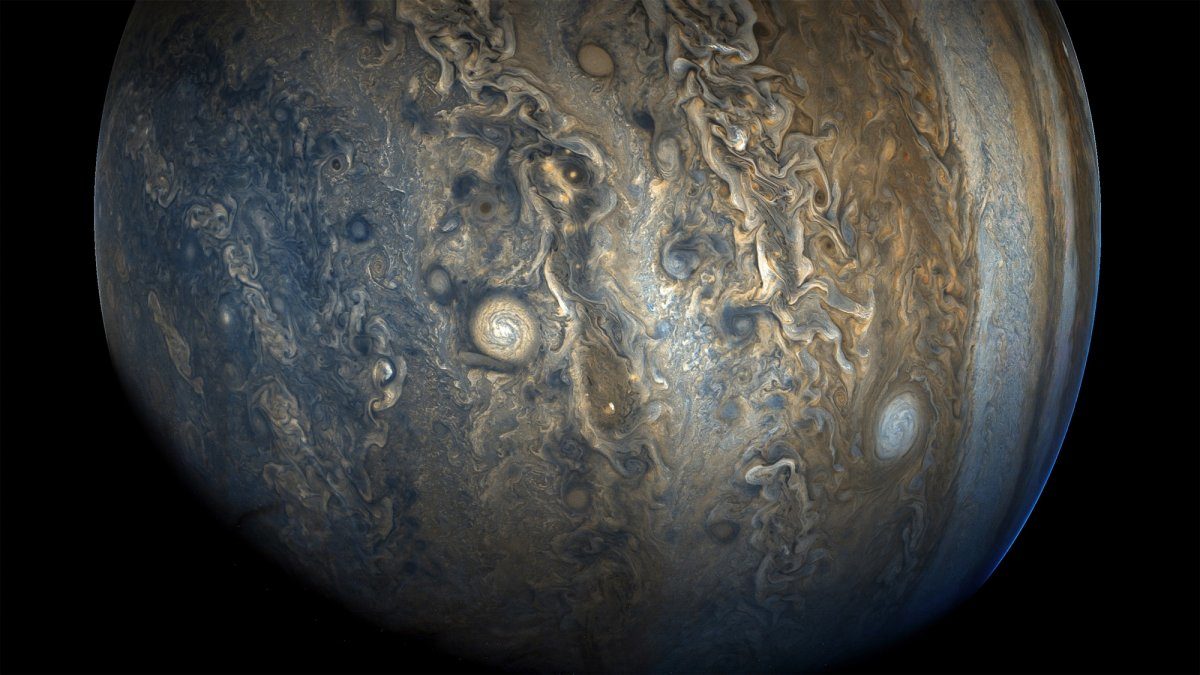
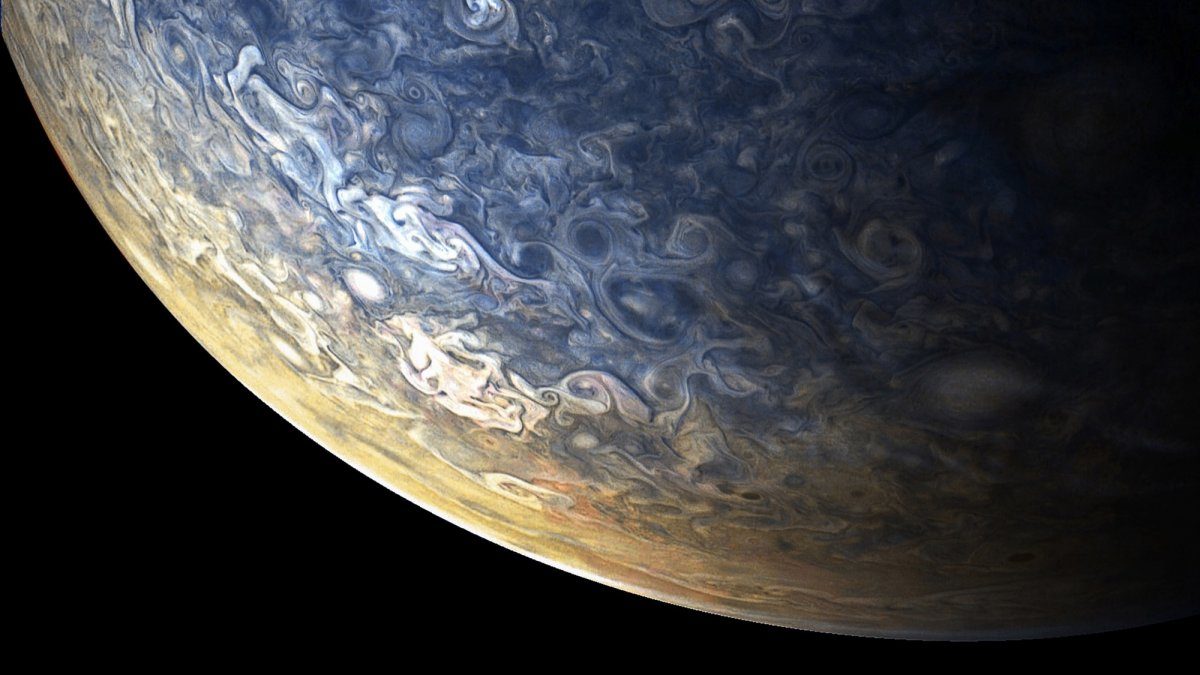
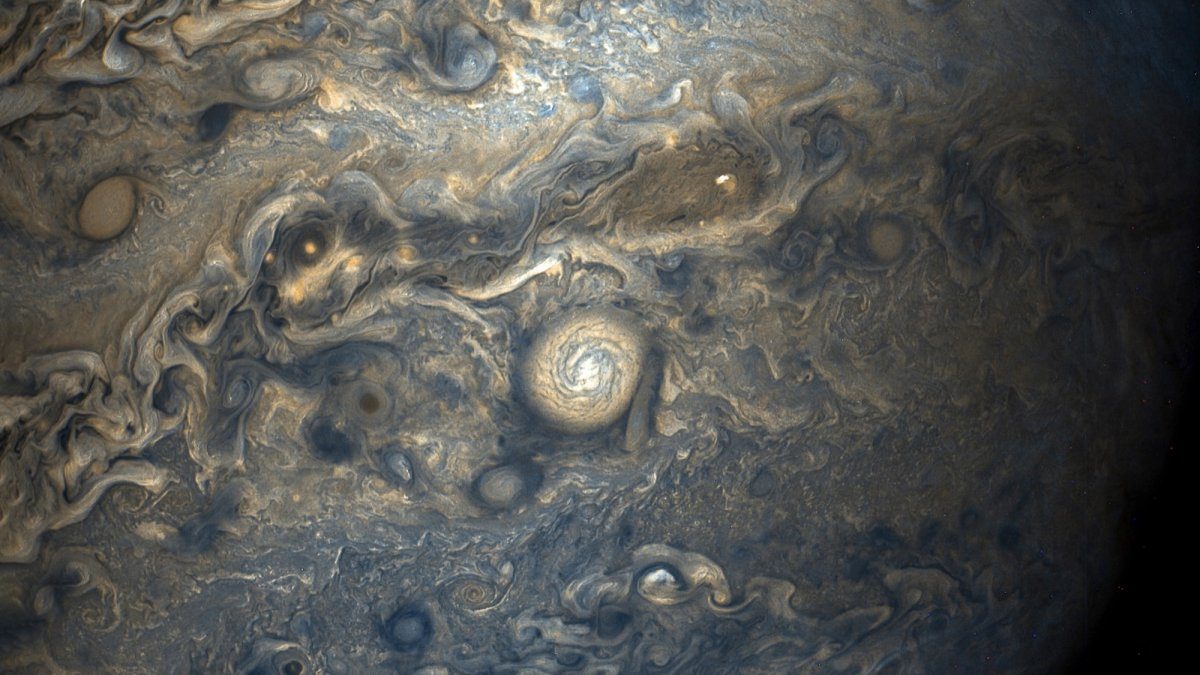
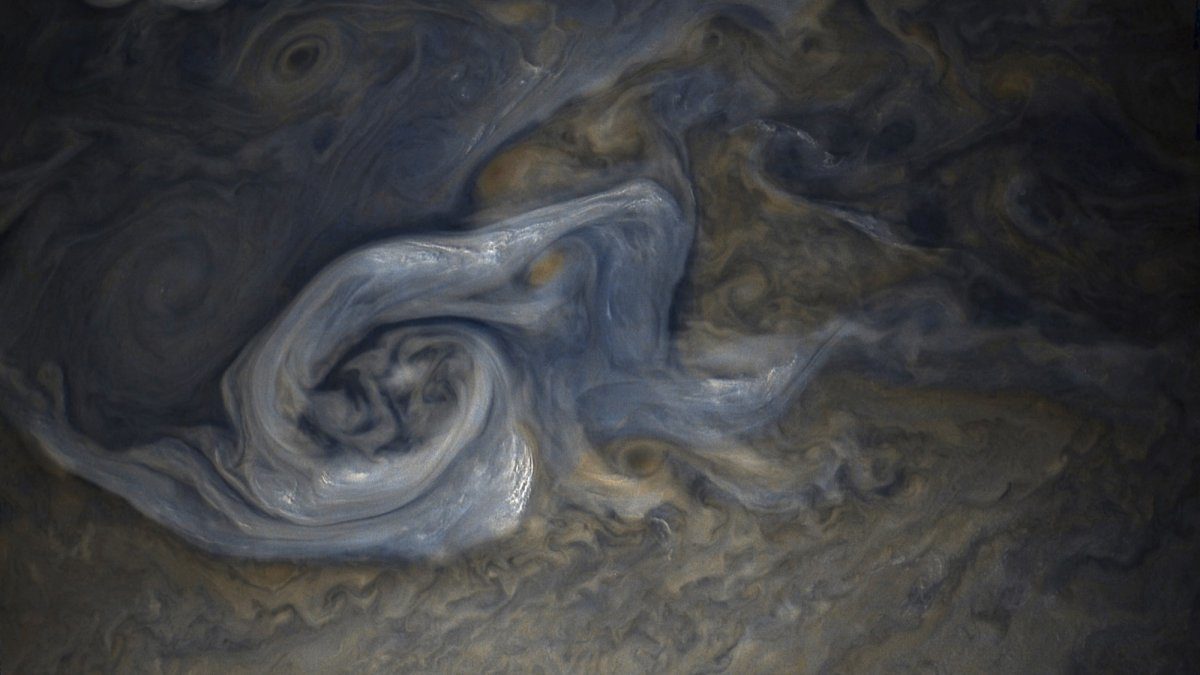
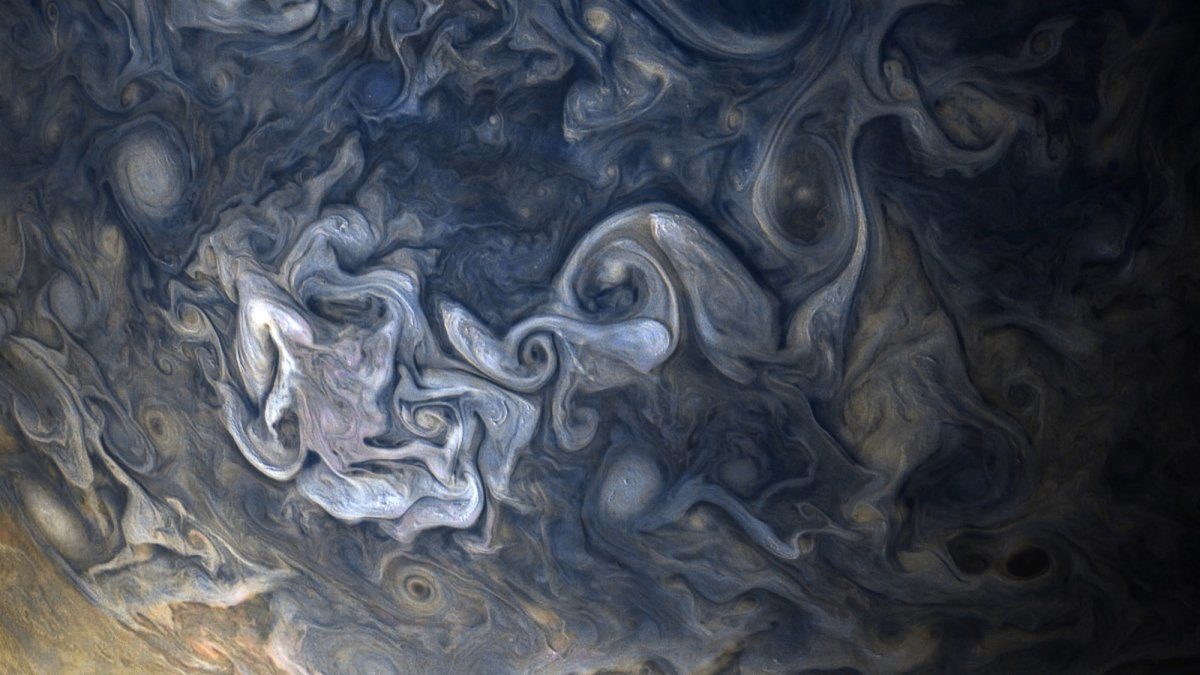
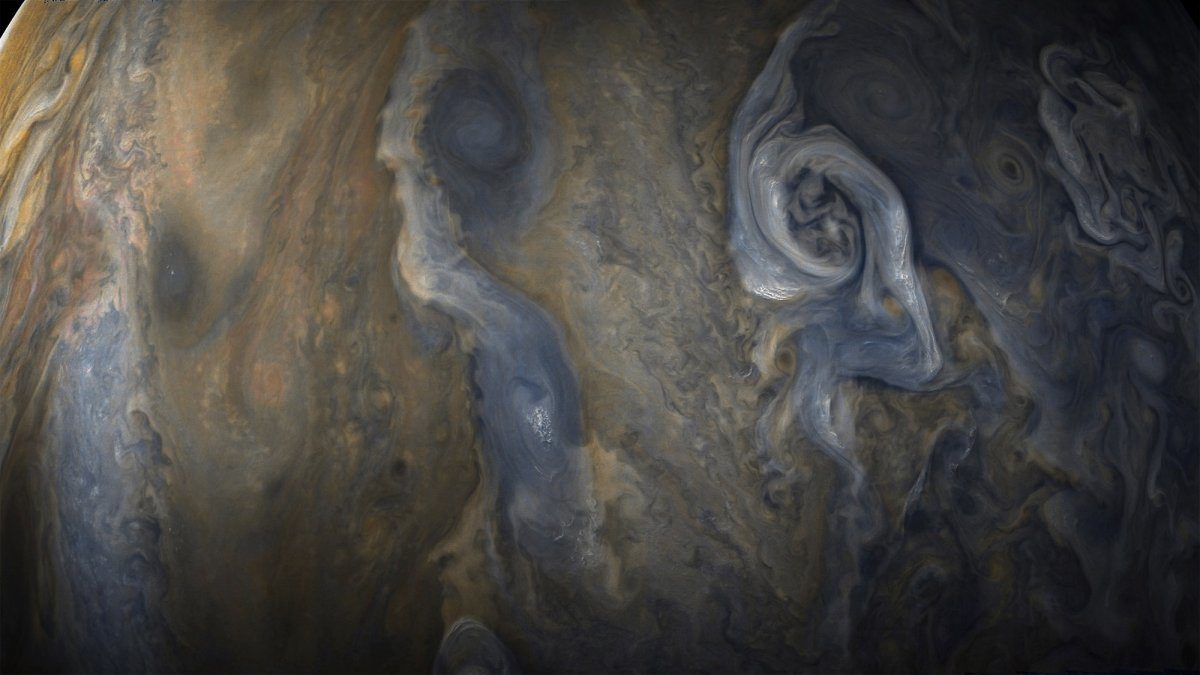
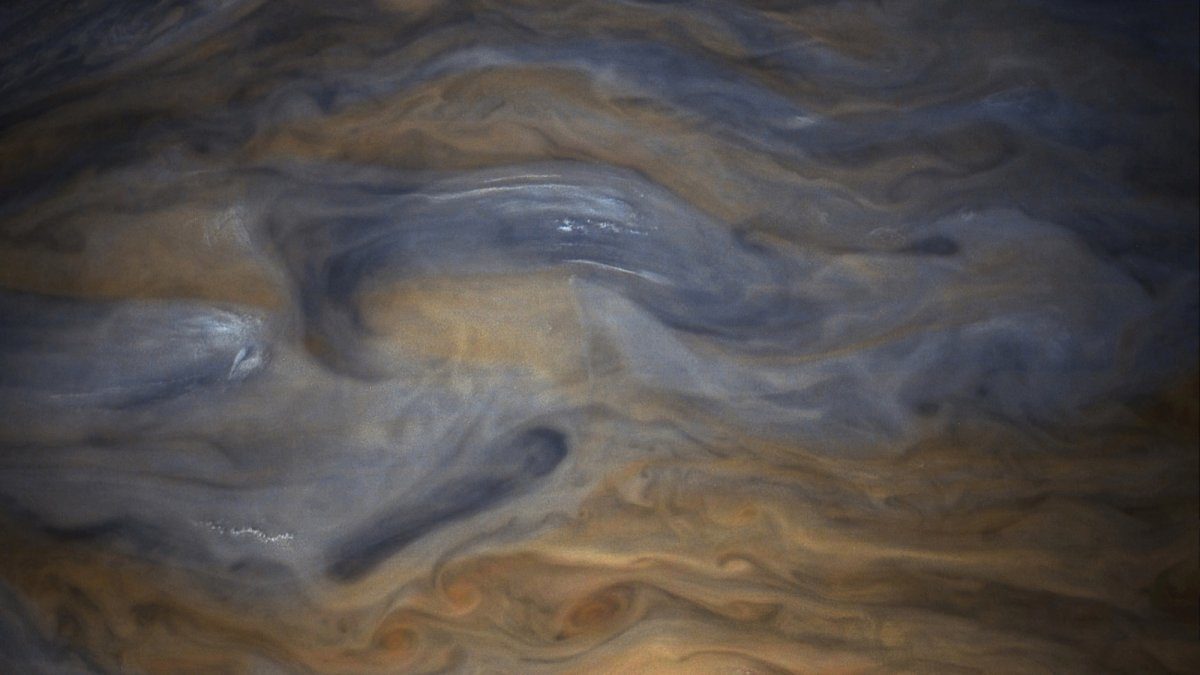
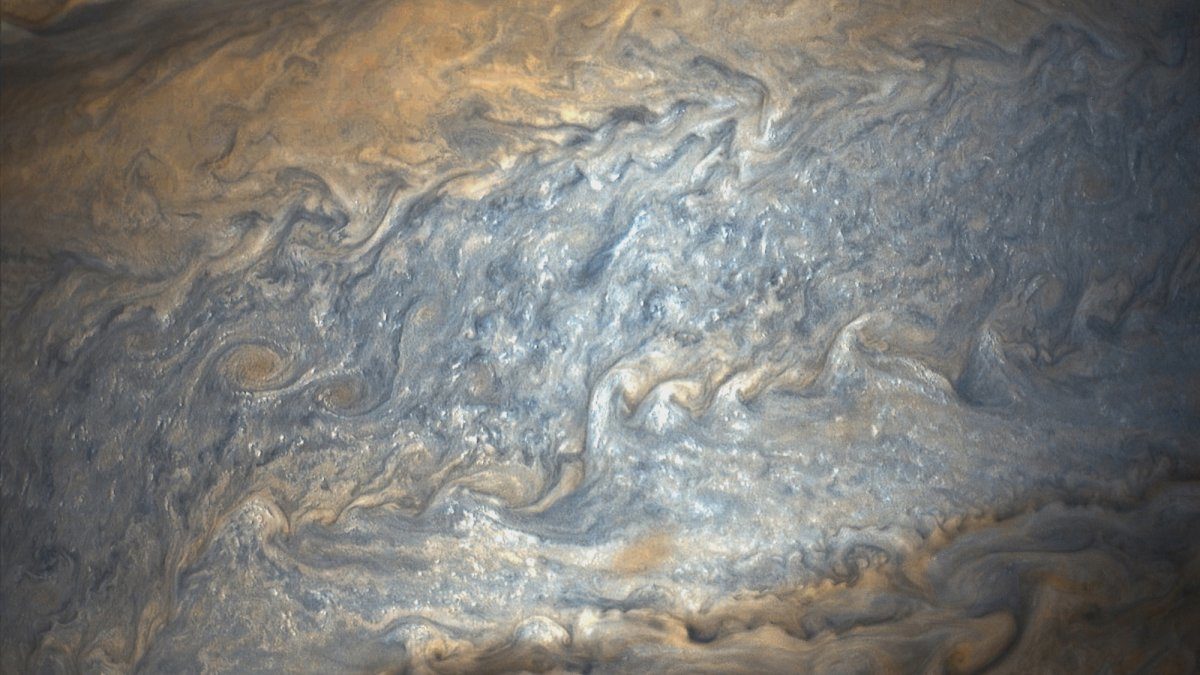
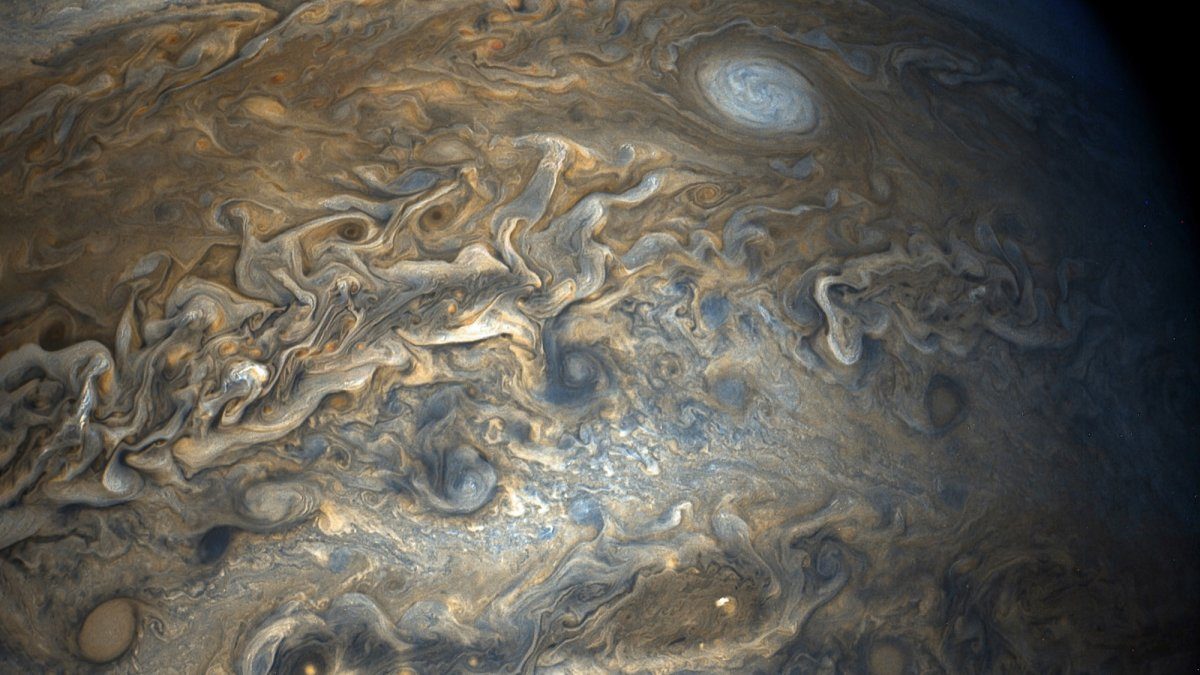
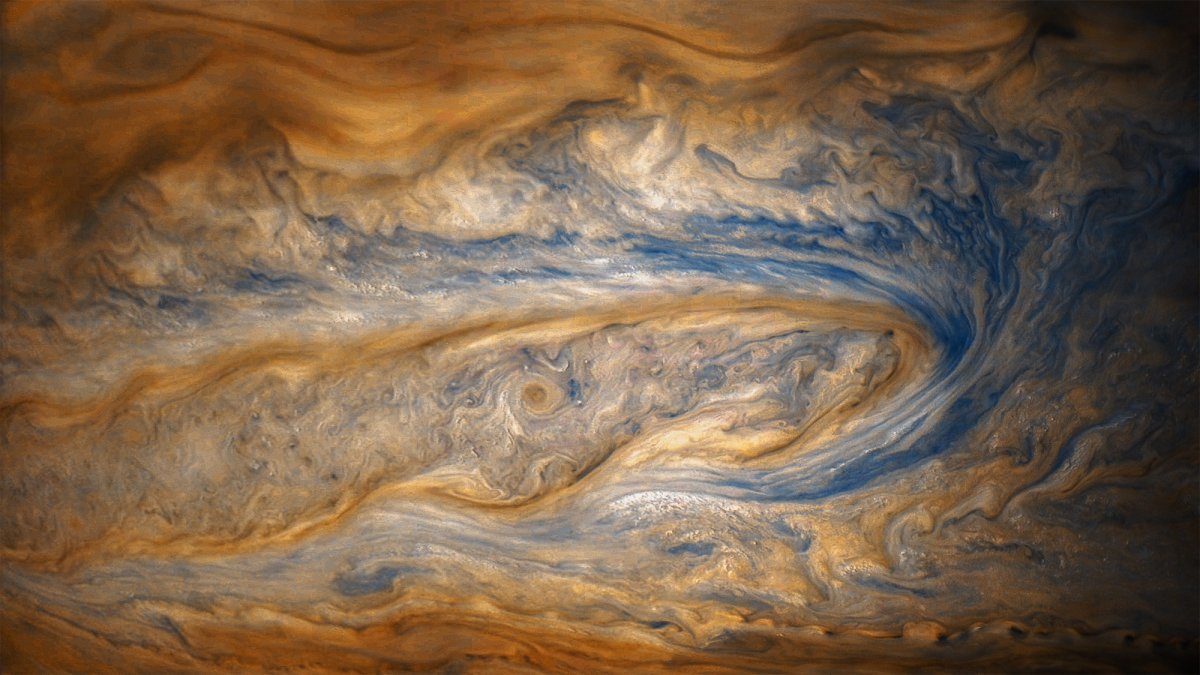
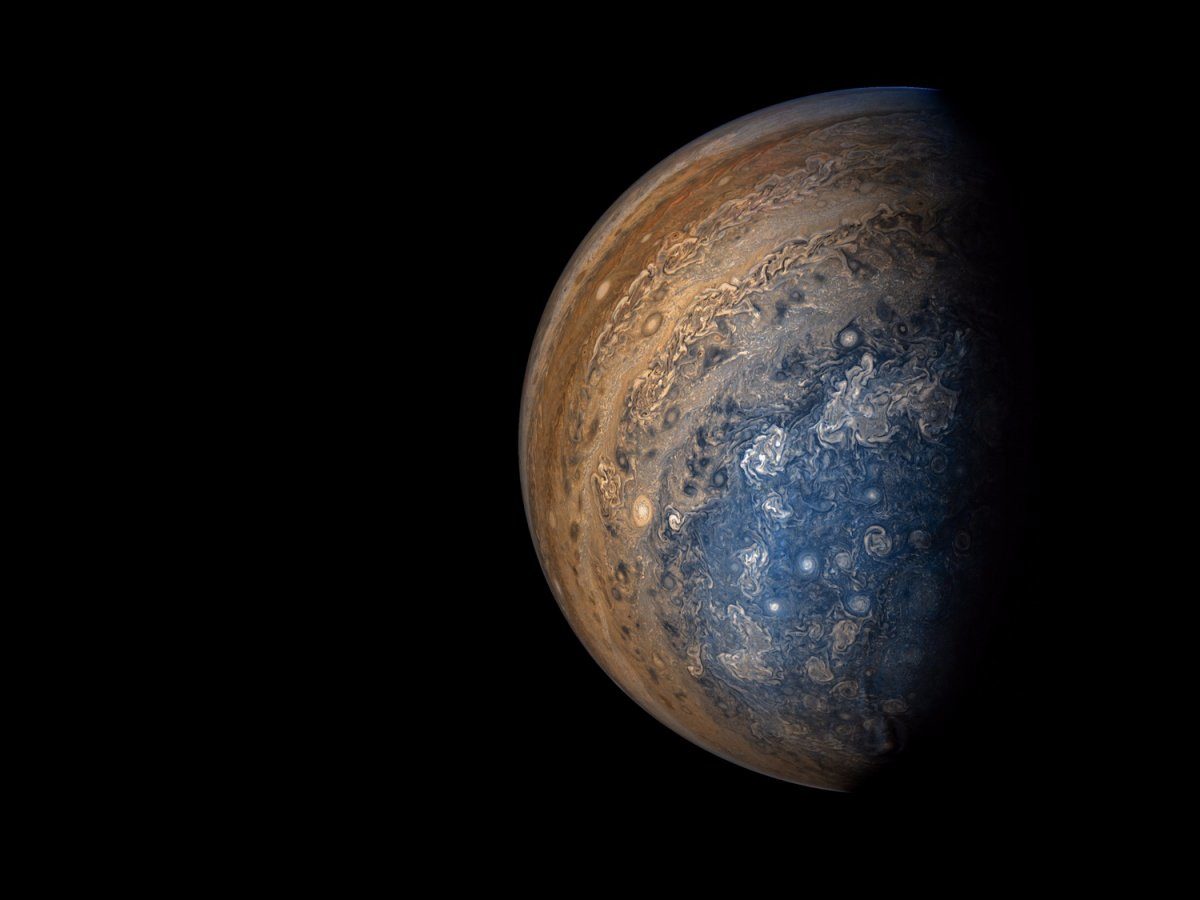



Reader Comments
Per Greek/Roman Mythology, it's certainly the other way. (See, e.g., children, Ares/Mars, Aphrodite/Venus, et al.)
R.C.
R.C.